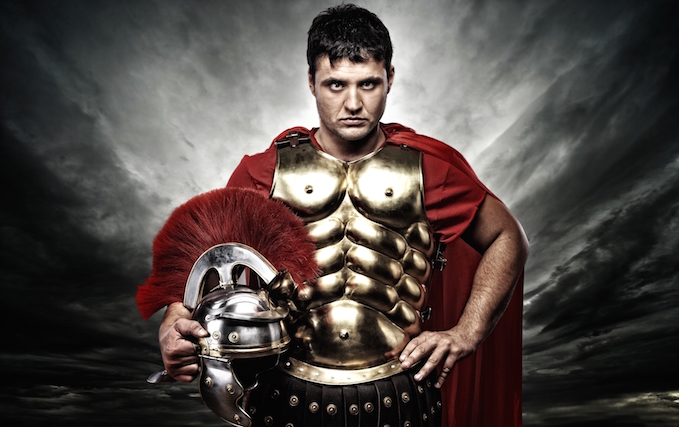What Is The Warrior Diet?

In previous articles, we’ve discussed the concept of intermittent fasting, and how you could use it to allow yourself larger meals while still eating at a caloric deficit and losing weight.
In general, flexible dieting involves keeping track of your calories and macros in order to be successful.
However, there are several rule-based intermittent fasting approaches that don’t involve keeping track of calories or macros, and the Warrior Diet is one of them.
It is a nutritional approach created in 2002 by Ori Hofmekler – a former health editor for Penthouse.
In short, it is a diet based on periods of under-eating, or ‘fasting’, during the day, followed by shorter periods of ‘feeding’ at night.
The Story
Much like the Paleo Diet, the Warrior Diet is based around theories about how our ancestors used to eat – more specifically, ancient warrior societies, like the Spartans and Romans.
The 2 different ‘phases’ of the diet – the ‘fasting’ phase and the ‘feeding’ phase – are supposedly based around the human nervous system.
According to Hofmekler, during the day our body’s sympathetic nervous system is in full gear, putting the body in an ‘energy spending’ mode.
At night, our parasympathetic nervous system kicks in, putting our bodies into an ‘energy replenishing’ mode.
The diet is designed to have you fasting during the day when your sympathetic nervous system is more active, and feeding at night when your parasympathetic nervous system is working harder.
The diet argues that eating at the wrong times messes with the efficiency of your nervous system, potentially causing you to feel tired during the day and more awake at night.
The Rules
Aside from timing, the Warrior Diet has very few restrictions.
There are no firm rules governing portion sizes, macronutrients, or food choices.
Instead, you should simply use hunger to dictate your food consumption during the daily ‘feeding’ window.
Basically, you would have one big meal per day, ideally 2 hours before bed, where you would consume most, if not all, of your calories for the day.
That’s it – about as simple as you can get.
However, in addition to that overarching rule, there are some other suggestions that you should follow to optimize the diet’s effectiveness, such as:
- Avoiding refined processed foods
- Eating only natural, chemical free or organic foods
- Minimizing consumption of foods that are wrapped or bottled in plastic containers
- Minimizing alcohol consumption because alcohol compromises the liver’s ability to rid the body of toxins
- Eating carbohydrates last during the evening meal in order to stabilize the level of insulin in the blood
- Cycling between high-fat and high-carbohydrate days in order to maximize the body’s energy utilization efficiency and capacity to burn fat during exercise
The Positives Of The Warrior Diet
- Only 1 timing-based rule to follow – no fixed limits on portions, food choices, or macros
- You get to eat really big meals every night, feeling like you’re feasting even on a caloric deficit
- Depending on how you adapt, you may find that you have more energy during the daytime when you’re fasting
- You only have to worry about planning for 1 meal per day
- Can be effective for fat loss, since it is difficult to eat at a caloric surplus in just one meal
The Negatives Of The Warrior Diet
- Not very optimized for macronutrients, since your single nighttime meal may not have a suitable ratio of protein/fat/carbohydrates
- Doesn’t allow you to eat lunch, which can be quite limiting socially
- Restrictive in terms of timing, since you must consume enough calories every day in your single nighttime meal
- May find that you feel hungry or sick during the fasting periods
- Since there are no food choice restrictions, it can easily lead to dietary imbalances if you’re not careful
My Thoughts
While the Warrior Diet provides a practicable approach to intermittent fasting that doesn’t involve calorie counting, you have to separate the truth from the dogma.
In my opinion, much of the nervous system theory isn’t really what makes the diet potentially useful for people.
Instead, it is that it provides a simple framework for intermittent fasting, allowing you to eat a big, filling, unrestricted meal at the end of the day, and still have a strong possibility of losing weight.
That being said, there is nothing magical going on here – and it is simply another way to split up your daily caloric intake.
In addition, if you decide to try this diet, you need to be careful to ensure you are getting both adequate protein and carbohydrates during your large nightly meal – otherwise, you’ll likely find that your performance in the gym suffers.